- Home
- Peter Cawdron
Monsters Page 2
Monsters Read online
Page 2
The thickness of eggshells decreased in both domestic poultry and wild birds, reducing the number of offspring to an average of 1.8 per roosting nest in North America alone. At that rate, biologists predicted the extinction of all but the hardiest of bird species within a decade.
So many amphibian species succumbed to extinction in the wake of Comet Holt that scientists initially thought the entire phylogenetic clade had been wiped out, destroying tens of thousands of individual species. The discovery of desert frogs and cane toads surviving in the remote outback of Australia gave hope that some amphibians had survived to continue a genetic line that predated the dinosaurs.
Algae blooms choked the Great Lakes, while microscopic plankton and other strains of cyanobacteria dominated large tracts of the Pacific Ocean, spanning upwards of ten million square miles from the coast of Chile to New Zealand. Although the mechanism stimulating the algae was unknown, scientists hailed the bloom as a carbon sink. They said the bloom acted as a counterweight to anthropogenic climate change, and they thought that atmospheric warming might reverse, but it didn’t. They noted that the algae was exchanging CO2 for oxygen, but the blooms suffocated the oceans, decimating fish stocks. Within a few years, the proportion of oxygen within the atmosphere began to change, creeping up toward prehistoric levels.
Scientists predicted the biosphere would be self-regulating, and expected oxygen levels to peak well below 25%, but even a small increase of less than two percent within the first decade encouraged forest fires to run rampant. The CO2 released by the fires only fueled the algae further.
It took some time for scientists to recognize the relationship between the devastation of entire families of species and the advent of gigantism, as not every species was equally affected. At first, the enlargement of surviving species was assumed to be a naturally selected response to the rapid loss of competitive pressures from other species, but Natural Selection didn't explain the changes to domestic pets.
Although most cats and dogs had become feral, being abandoned by their owners either through desperation or an untimely death, even the litters of those that continued in the care of humans showed enlargement. Within a few years, cats were reaching four feet in length.
Dog breeds like the German Shepherd reached the size of a small pony within a decade.
Comparisons were made to studies on the recognized changes in feral animals, like the lengthening of the gut and thickening of the intestinal tract, but these had previously corresponded with dietary changes. That these new variations should arise in animals still reared on processed pet food was alarming. Little attention was paid to the issue, though, and it barely registered in the back sections of the newspapers.
The advent of gigantism was gradual. It was an anomaly, a nuisance, nothing compared to the annual cycle of the Sparkles, with their driving snow and spring floods.
Although the newspapers made fun of the scientific name for cats, Felis catus and Felis silvestris catus, joking about the similarity to Felix The Cat, Sylvester and Tweety Bird, serious research was undertaken using the common, household cat to examine the potential long-term effects of gigantism.
Researchers at Cornell University conducted a controlled study of twenty five generations of cats from five distinct pedigrees over three years, in order to understand the phenomenon more precisely. Their findings were controversial. Not only were cats becoming progressively larger, but the composition of their physiology was subtly changing. Muscle tissue became more dense, nerve endings increased in frequency, hip bones morphed in shape, giving the cats more leverage when springing for prey, but the most controversial aspect of their findings was that the animal’s canine incisors were increasing in length and thickness.
Time Magazine picked up on the implications of this research and ran a front page story titled, Our Future? With a picture of cavemen using spears to battle saber tooth tigers, the imagery was inflammatory. Several prominent biologists spoke out against the article, saying it was speculative, that there was no reason to think animals were undergoing genomic regression, and yet there was no doubt gigantism wasn’t merely enlarging animals. Life on Earth was being subject to rapid genetic change, but the question was, how? The ability of scientists to investigate the problem was hampered by the seasonal impact of the dust trail left by Comet Holt.
In spite of government warnings, large sections of the population fled to the equatorial regions to escape the extreme winter snow storms. The influx from Europe and the Americas inundated third-world resources. There was an expectation that the government or the military would be able to make everything right, but the scale of migration was unprecedented and quickly escalated out of control.
Tribes formed within the various migration camps, mostly along ethnic lines as they always had, but a few were based on religious affiliation. With millions of people displaced, disease soon swept unchecked through the make-shift camps. Man preyed on man in a struggle for survival that was barbaric and cruel.
Those newspapers that still survived were largely run by volunteers. They reported outbreaks of cannibalism. It seemed once that particular taboo lifted, once it was accepted by one tribe, it quickly became the norm in an area as food and medical supplies dwindled. The army and police were stretched too thin. They had to pick and choose which laws they could enforce, with their preference being to turn a blind eye where there was at least a semblance of civil order, regardless of what evil lay beneath.
Political structures collapsed, leaving local fiefdoms in their place. The presumption of innocence was lost, and bitter feuds broke out between tribes vying for dominance of the camps. In the midst of the chaos, religious groups struggled to maintain their character, pleading with their followers to stay loyal, but the abuse of authority within their own ranks undermined their credibility. It seemed opportunity was the greatest temptation of all. When the animal attacks began, preying on the sick, the elderly and the weak, mankind finally realized gigantism was more than a novelty, a new world order had formed. Man was no longer the apex predator.
Investigations were made into the possible causes for gigantism and a biological agent was identified in the fallout from the comet. Although the structure was simple, being a rudimentary combination of amino acids forming a non-bacterial pathogen, it acted like a virus. It wasn't a virus in the technical sense of the word, as its helical structure was far too small, but the word virus was all the newspapers needed to hear. Comet Holt had brought an extraterrestrial plague upon Earth.
The New York Times broke the story with one word plastered across its cover in letters eight inches high, VIRUS. The Washington Post called it THE FINAL HORSEMAN OF THE APOCALYPSE. There wasn't enough time to study the celestial biological agent, let alone to develop a strategy for containing or reversing its effects. What research could be done focused on the genetic differences between quadrupeds and quadrumana, as mankind and primates were largely unaffected by the pathogen. Investigations were made into the evolutionary genetics of the long-extinct mega-fauna and their relationship to an oxygen-rich environment, but the effort was too little, too late.
Hard decisions had to be made, and those that still held to the authority of the Old World knew their days were numbered. The survival of the human race depended not just on the priorities being set, but the speed with which decisions could be implemented. Governments became ruthless. Martial law was implemented in the camps. Punishment was swift and severe. Looting was a capital offense. That discretion was given to field commanders to determine guilt and innocence became a worse problem. The army found itself as judge, jury and executioner.
Somehow, the newspapers still printed. Even when it seemed doubtful anyone would read them, the major papers felt a sense of obligation to voice the concerns of a populace reeling in shock. In some cases, only flyers were printed, just a couple of folded pages, but someone somewhere understood the importance of the news, someone kept the presses running.
The United Nations called
the institution of martial law a tactical response, but that was a clever way of avoiding the truth. Martial law was merciless. What began as disaster response morphed into preparations for the radical restructuring of Western society. Rather than seeking to save all, Western governments adopted the tactics of those in the East. They chose to save only some, but their choices were based on money, power and influence, qualities that were transient and rapidly moving out of vogue. For all the fear and alarm that was raised in those final days, few saw the end coming. There was still a sense that somehow civilization would escape the downward spiral into animalistic violence, but it didn't.
Science was one of many casualties as the civilized world collapsed. Cynics had long attacked science with irrational, emotionally-charged arguments that sought to preserve the status quo. They had attacked the theory of evolution. They had attacked the research on climate change. They spread fear and misinformation about vaccines. There had even been doubts cast upon the great accomplishments of the era, like the moon landing. It was as though the existence of the great pyramids was being called into question. And so, when the fall of man came, the Luddites rejoiced. For them, man's demise was a vindication of their ideals, a moment full of spite and bitter rejoicing.
The economies of scale that had for so many years given civilized man access to technologies he could never build for himself finally failed. The innovations that gave hundreds of millions of people access to foods they didn't have to harvest, access to clothes they didn't have to weave, access to houses they didn't have to build, these all fell into chaos. The supply chain, once broken, could not be restarted. Each cog in the wheel, each link in the chain had been built one upon another over the course of centuries.
Ever since the industrial revolution, civilized man had built upon the successes of previous generations. Relative to the billions alive on Earth, only a handful of people actually understood and could build devices like a transistor or an integrated circuit from scratch. Without the supply chain, mankind was as helpless as a newborn, and so when the Fall came and society collapsed into violence and chaos, mankind was left helpless and alone.
Eastern societies fared better than the West. Their dependence on technology was much lower, so it was easier for them to make the transition back to feudal times, but they were easy prey to the monsters of Asia. Tigers were the first to exact their revenge on mankind. Litter sizes increased. Although it took a century for tigers to reach the size of a horse, by that time they numbered in the tens of thousands. With speed and stealth that belied their weight, they preyed ruthlessly on mankind.
The Asian black bear, brown bear and sun bear eventually grew to the size of a rhino, while the Komodo dragon reached up to thirty feet in length. Mankind was easy prey. Omnivores became carnivores spoiled for choice.
Although polar bears resided predominately above the Arctic Circle, a variant sub-species arose to fill the increasingly empty ecological niches in the relatively warmer, southern climates. With a thinner coat, they ventured south across both Asia and the Americas, reaching as far as Beijing in the East and the Dakotas in the West. Their spread into North America was held in check only by competition with bears such as the grizzly, brown and black bear.
Herbivores like elk were dangerous, attacking anyone that ventured into their territory during mating season. Their aggression was surprising to all but hunters, who had long known a stag in the rut was as dangerous as a mountain lion, but now a fully-grown male could reach nine hundred pounds. Even a fleeting attack was often fatal.
At first, animal attacks and fatalities were considered a rarity, but soon the remaining scientists realized this was due to a breakdown in reporting structures. In reality, for every account that made it to the press there were hundreds of attacks that went unreported. With such abundant food sources, the resurgence of the mega-fauna took a little over a hundred and eighty years.
There were few newspapers in those final days of the first decade, but those that did survive spoke of being abandoned. The last of the papers were handwritten accounts, printed and circulated to as many who would heed their message. They were feeble attempts to dispel the myths and misconceptions that had proven so lethal to so many. There were the lies about Europe surviving intact, the lies about safety in the tropical zones. Rumors spread on the East Coast about the West being a haven for all, and vice versa, but these lies were devastating. Lies were the final plague upon mankind, displacing and killing hundreds of millions who believed in a false hope, that help was around the corner, that salvation was coming. Help never came. A sense of bitterness arose among survivors.
Conspiracy theories abounded, with blame being apportioned everywhere, but no one had any answers. Survivalists fared better than most in the early days. Their paranoia had them hoard supplies that could feed hundreds for years on end, but even they found themselves overwhelmed by the ferocity of man reduced to the state of a wild animal. Their attempts to defend themselves and their caches only drew more attention to their supplies and they were inundated by hordes of devious, vicious men and women struggling to survive.
The buildings of man still stood, and would probably stand in one decrepit form or another for millennia to come, but the societies that founded them faded like the early morning mist drifting across a lake.
Once the newspapers came to an end, the New World began, a world in which survival was the only virtue. For those in the New World, the reign of Homo sapiens, the wisest of men, became but a legend, a fable lost in the mists of time. It seemed fantastic that once people had flown above the ground in silver birds that roared through the sky.
Concepts that had been taken for granted were like the fairy tales of old. The ability to talk to someone hundreds of miles away through a small metal box, or to capture the view one saw in front of them, freezing it on a glass screen or printing it on paper seemed fanciful. Pictures and images of the Old World survived, but they held no more meaning than hieroglyphics. They were a novelty, an amusement, something to argue about or trade for equipment, but never something to understand. Slowly, the Old World was forgotten, except by those that kept the newspapers.
Monsters roamed the cities. These weren't the monsters of myth and lore, but they were every bit as deadly. Packs of wild dogs, wolves, mountain lions, rats as large as domestic cats, and they all bred profusely.
Guns, which had so long been the means for mankind to project power, failed to stop the monsters. Even high-powered rifles did little more than aggravate a Grizzly standing twenty feet tall on its hind legs. Military squads could have taken out most of these animals, but their ranks were decimated by famine and disease.
As the New World took shape, new priorities arose. Reading was lost. At first, there was no time to read. Then there was nothing of any substance to read, just fragments of information, often completely irrelevant to the harsh reality of life. Most people understood basic numeracy, just enough to barter in the markets. Some grasped simple words, but only if they needed to keep a ledger. Few understood enough to read properly.
Suspicions arose. Survivors sought to blame someone for the calamities. Science was an easy target. Science had failed. Science had underestimated the implications of Comet Holt. Science couldn't save mankind from the drifts and the floods. Science had missed the rise of monsters. Science had made mankind soft, vulnerable, weak. Some said scientists had created the monsters, like Frankenstein in his lab.
Knowledge was seen as something akin to arrogance. Superstitions prevailed because they were easier to justify than reason. Readers were persecuted like the witches of old, with a sense of vengeance being laid upon them for the sins of the past. Those that wanted to hold on to the Old World with its knowledge of atoms and stars, footballs and cars, were seen as dreamers at best, or as subversive at worst.
There was no equilibrium between the tribes of men. In some countries, mankind managed to maintain a level of sophistication like that of the feudal Dark Ages, in others, they we
re thrown back into the Stone Age, existing as subsistence farmers, hunters and gatherers.
In the New World, monsters reigned.
BOOK ONE
R E A D E R S
Chapter 01: Readers
Bruce Dobson was a reader. He hadn't always read. It wasn't until after the battle of Bracken Ridge that he first sought out a reader in much the same way as men once sought out a prophet or a soothsayer, only his interest wasn't in divining the future. Bruce wanted to read about the past.
For Bruce, the past was an enigma, a dark secret, a puzzle he had to unravel. Somehow, intrinsically, he understood that life moved in cycles, repeating time and again with only minor variations. Summer always followed spring, the moon waxed and waned, crops grew, harvests came, seed was gathered, and life would begin anew in the coming year. There was much to learn from the cycles of the past.
His father thought he was mad. Why bother with the past? The past was gone, never to return. What could the past offer? It was the future that was important. Whereas the past was static, the future was whatever he wanted to make of it, so why bother with the past? His father had a point, Bruce understood that, but, he argued, the past determined the future, in the same way as the autumn rains preceded the heaviest snows. Try as they may to deny it, their lives were shaped by the past.
Bruce Dobson died on Bracken Ridge, at least that's the way he felt. His innocence, his excitement for life, his zeal and enthusiasm were casualties in the war with the northern tribes. Seeing his brother fall before him was too much for young Bruce.
Jonathan was the older of the Dobson boys. Jonathan told his mother he'd look after Bruce. The two boys, barely eighteen and twenty, thought they were indestructible, as countless other young men had before them, misguided and sent to their untimely deaths across thousands of years of senseless tribal warfare. The cause had changed, the faces were fresh, but the heartache and tragedy was just the same as it had always been.

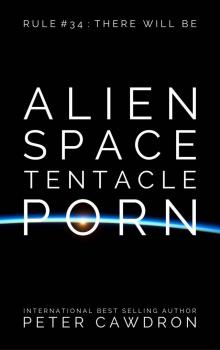 Alien Space Tentacle Porn
Alien Space Tentacle Porn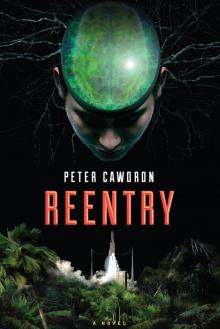 Reentry
Reentry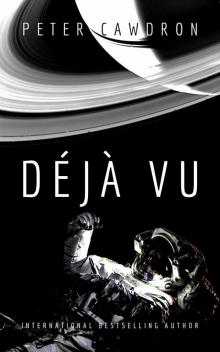 Déjà Vu (First Contact)
Déjà Vu (First Contact)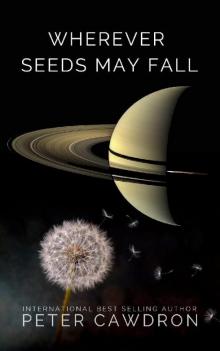 Wherever Seeds May Fall (First Contact)
Wherever Seeds May Fall (First Contact)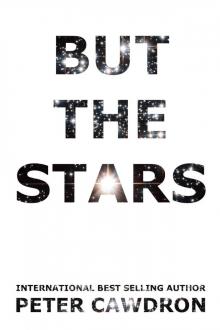 But The Stars
But The Stars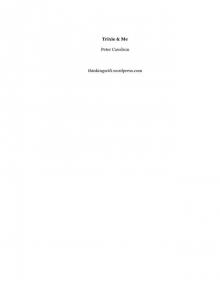 Trixie & Me
Trixie & Me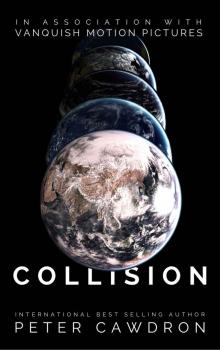 Collision
Collision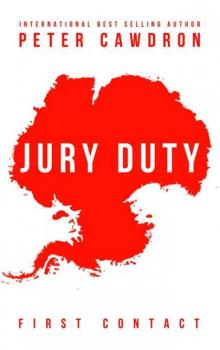 Jury Duty (First Contact)
Jury Duty (First Contact)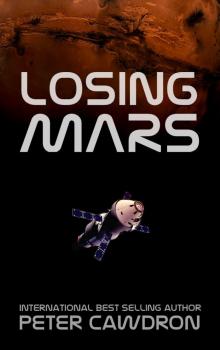 Losing Mars
Losing Mars We Are Legion (van Helsing Diaries Book 2)
We Are Legion (van Helsing Diaries Book 2) Van Helsing's Diaries (Books 1-3): Nosferatu
Van Helsing's Diaries (Books 1-3): Nosferatu Shadows
Shadows 3zekiel (First Contact)
3zekiel (First Contact) Vampire (van Helsing Diaries Book 1)
Vampire (van Helsing Diaries Book 1) Xenophobia
Xenophobia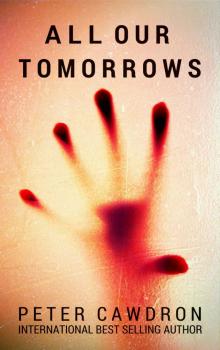 All Our Tomorrows
All Our Tomorrows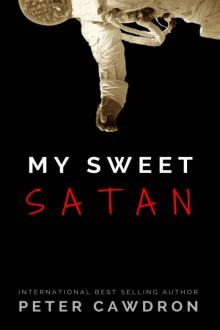 My Sweet Satan
My Sweet Satan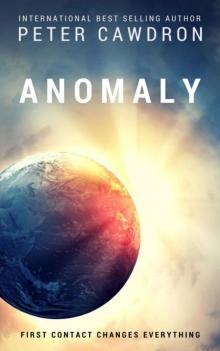 Anomaly
Anomaly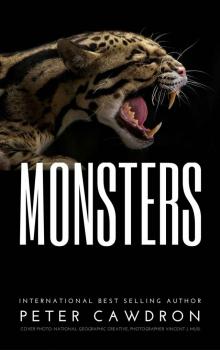 Monsters
Monsters